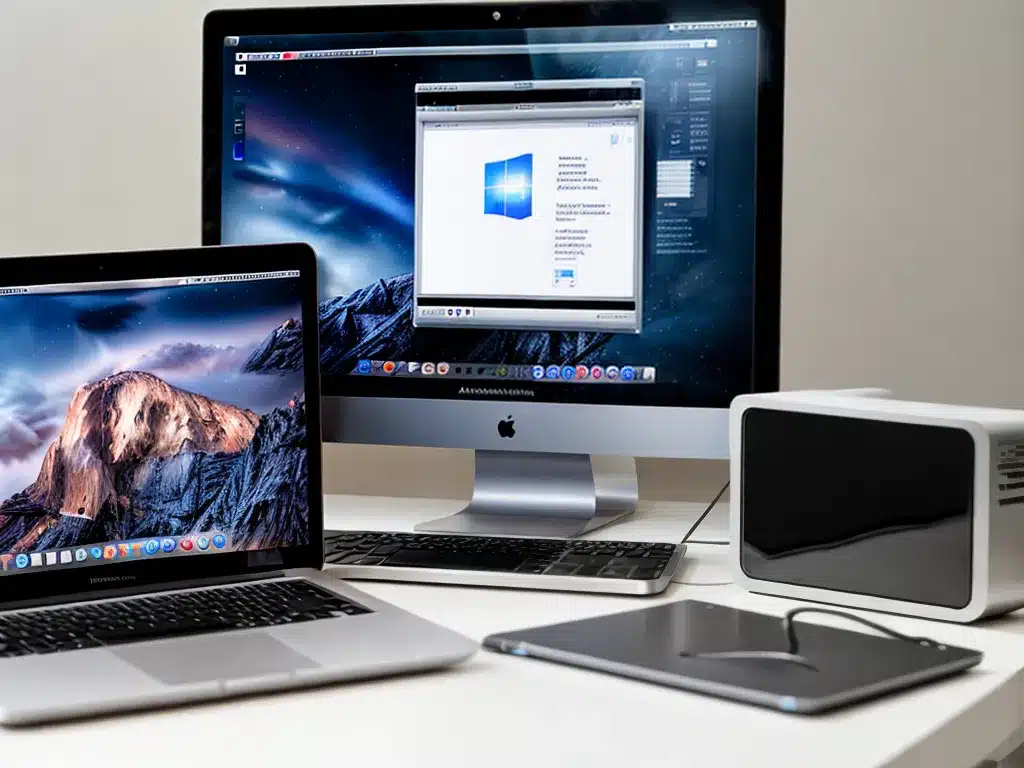
Introduction
Backing up your computer is one of the most important things you can do to protect your data. As we rely more and more on our computers, backups become even more critical to avoid losing important files and information.
In 2024, automating backups will be easier than ever, whether you use a Mac or Windows PC. There are great options for automatic cloud backups as well as local backups to an external drive.
In this article, I’ll cover the best ways to automate backups for both Mac and Windows in 2024.
Automated Backups on Mac
Apple has built-in tools to make automating Mac backups simple. Here are the best options for automated Mac backups:
Time Machine
Time Machine is included free with MacOS and provides automatic backups to an external drive. Just connect an external hard drive and Time Machine will prompt you to use it for backups.
Time Machine will automatically back up your entire Mac once per hour. It saves hourly backups for the past 24 hours, daily backups for the past month, and weekly backups for everything older than a month.
This is a great set-it-and-forget-it option for Mac backup automation.
iCloud Backup
You can also automatically back up your Mac to iCloud. On the Apple menu go to System Preferences > iCloud and turn on iCloud Backup.
iCloud will automatically backup your most important files including Photos, Mail, Contacts, Calendars, and more. Files are encrypted for security.
Upgrading your iCloud storage plan from the free 5GB may be required for full Mac backups.
Third-Party Cloud Backups
Services like Backblaze and Carbonite offer unlimited cloud backup for Mac for a monthly subscription.
They will automatically backup your entire Mac securely online. Versions with extended file history are available. Restores are easy if needed.
This adds an extra layer of offsite backup protection.
Automating Windows Backup
Windows also has built-in backup tools and third-party options for automation:
File History
File History is included free in Windows and provides automatic backup to an external drive. It is the Windows version of Time Machine.
Once enabled, File History will automatically save copies of files in your libraries, desktop, contacts, and favorites folders periodically whenever they change.
File History makes it easy to restore previous versions of files.
Backup and Restore
The Windows Backup and Restore utility will automatically create system image backups and file backups to an external drive or network location.
You can schedule full or incremental backups to run automatically on a schedule. It can be used to restore your entire system or individual files if needed.
Third-Party Cloud Backups
Services like Carbonite, Acronis, IDrive, and others also offer automated cloud backup options for Windows.
These provide easy offsite backup of your entire PC with unlimited capacity and file history.
Tips for Automating Backups
Here are some tips to get the most out of automating your Mac and Windows backups:
-
Maintain multiple backups – Use both a local time machine backup and an offsite cloud backup for redundancy.
-
Automate completely – Turn on auto-backup for set-it-and-forget-it convenience.
-
Review backup logs – Periodically review logs to confirm backups completing properly.
-
Test restores – Do sample restores to confirm your backups are working.
-
Encrypt backups – Use encryption for enhanced security, especially for cloud backups.
-
Expand capacity – Upgrade cloud backup plans or drives as needed to fit growing storage needs.
Conclusion
Automating backups is critical today to protect irreplaceable data from loss. Both Mac and Windows have great options to make automated onsite and cloud backups easy.
Leveraging these built-in and third-party solutions, you can sleep soundly knowing your important files have redundant backups that run automatically. Test and review your backups periodically to verify they are working as expected. Automated backups give peace of mind that your data is protected.












